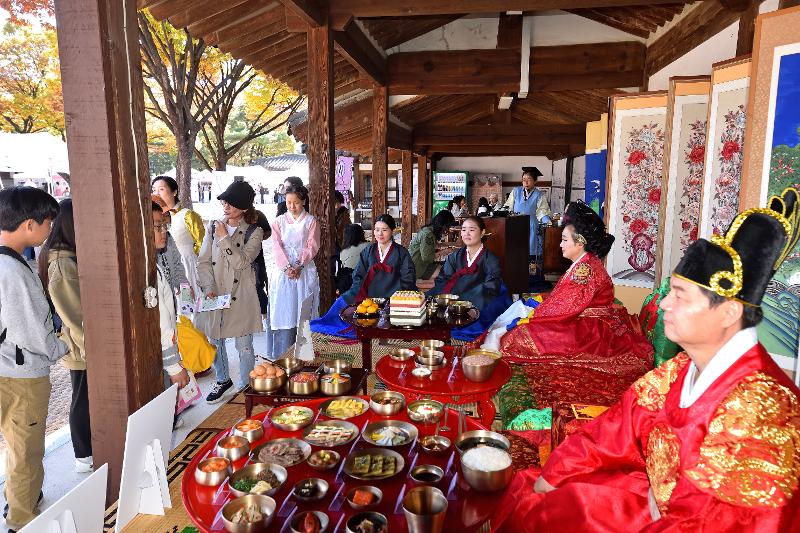
A traditional food festival slated for Oct. 18 at Unhyeongung Palace in Seoul's Jongno-gu District will feature royal court and holiday cuisine served to the king and aristocratic class of the Joseon Dynasty (1392-1910).
By Yoon Sojung
Photos = Institute of Traditional Korean Food
What cuisine did the royal court and aristocrats of the Joseon Dynasty (1392-1910) eat during holidays? A festival in Seoul can answer this question.
The Institute of Traditional Korean Food (ITKF) on Oct. 18 will host the traditional food event "King's Royal Table and Seasonal Cuisines" at Unhyeongung Palace in the capital's Jongno-gu District, featuring tastings and explanations of such cuisine along with recipes.
The 18th edition of the festival will comprise exhibitions, interactive events and tastings at Unhyeongung, a designated historical site in the city and the former residence of Heungseon Daewongun (1821-98), a key political figure of the late Joseon era.
The exhibition comprises two parts: the king's royal table and seasonal food of Joseon aristocratic families.
The table setting for Chuseok (Korean Thanksgiving) for the king replicates what is recorded about Queen Heongyeong in the Wonhaeng Eulmyo Jeongni Uigwe (Royal Protocol on King Jeongjo's Visit to His Father's Tomb in the Year of Eulmyo). Also known as Lady Hong, the queen (1735-1815) was the mother of King Jeongjo (1752-1800), the dynasty's 22nd ruler.
The table settings for the king on Chuseok and a daytime tea table for the queen will be displayed.
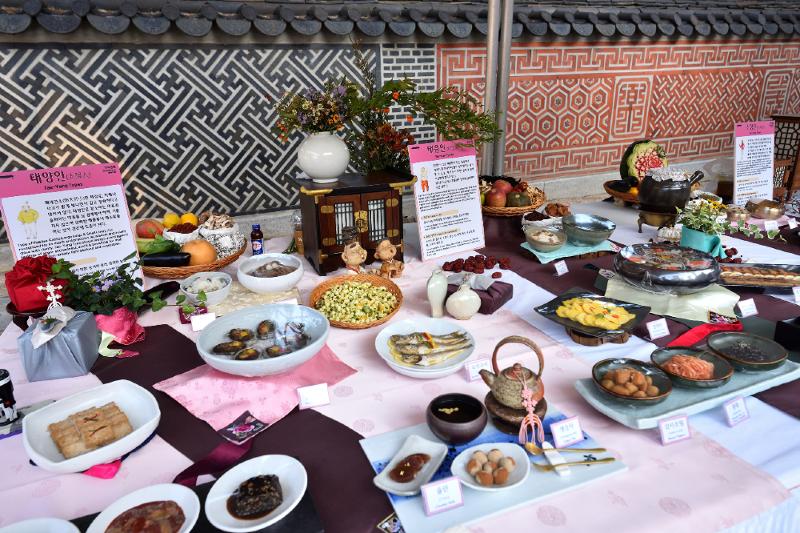
This exhibition at the traditional food festival on Oct. 18 at Unhyeongung Palace in Seoul's Jongno-gu District will feature the dietary habits of the Joseon era and ingredients suited for each constitution, including foods recommended for health (shown).
The seasonal foods for Joseon nobles and their families will present representative dishes served during five major holidays: Seollal (Lunar New Year); Daeboreum, or a traditional festival marking the first full moon of the lunar new year; Dano, the fifth day of the fifth month of the lunar calendar marking the end of spring, a good harvest and the start of summer; Chuseok; and Dongji (winter solstice), the 22nd of the 24 traditional solar terms.
The interactive zone offers firsthand experience in Joseon culinary culture through the making of traditional foods such as yugwa (deep-fried rice puffs) and joraengi tteok (snowman-shaped rice cake) as well as makgeolli (milky rice wine) made with chrysanthemum petals.
Food sampling events will include those for iconic holiday dishes such as yaksik (sweet rice with nuts and jujubes) for Daeboreum; songpyeon (half moon-shaped rice cake) and chrhsanthemum tea for Chuseok; sujeonggwa (cinnamon punch with dried persimmon) and patjuk (red bean porridge) for Dongji; and jehotang (medicinal drink) and ssukjeolpyeon (mugwort rice cake) for Dano.
A separate corner will provide consultations on the Joseon diet that suggests ingredients and lifestyle habits suited for each person's constitution based on the traditional sasang (four body types) theory of medicine. Other events include sampling of healthy foods depending on one's sasang and a stamp tour.
"This festival will offer the chance to experience the wisdom and traditions of our ancestors embedded in the culinary culture of Joseon's royal family and nobility," ITKF President Yoon Sook-ja said. "I hope you can feel the depth of Hansik (traditional food) culture by seeing, hearing, tasting and cooking in the quiet autumn atmosphere of the palace."
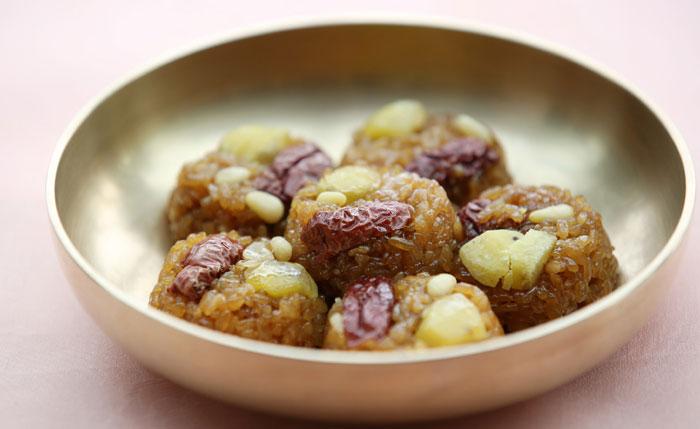
The traditional snack yaksik is usually eaten on Jeongwol Daeboreum.
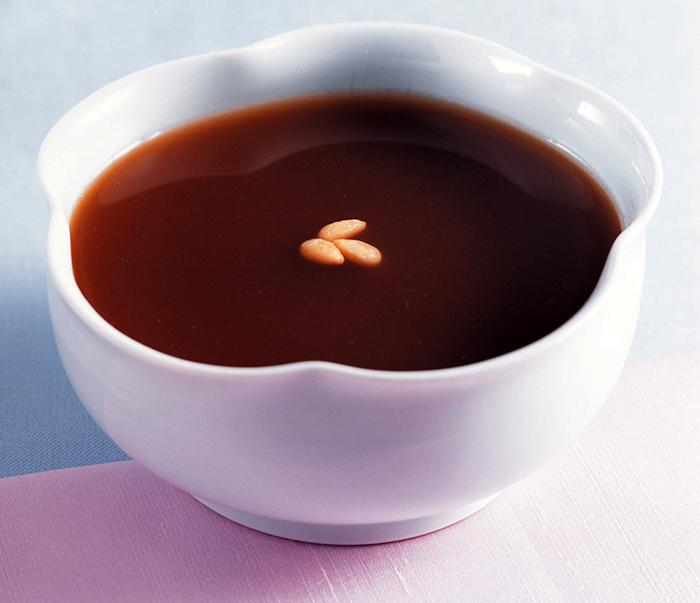
Jehotang is a traditional health drink made with medicinal herbs usually served on Dano.
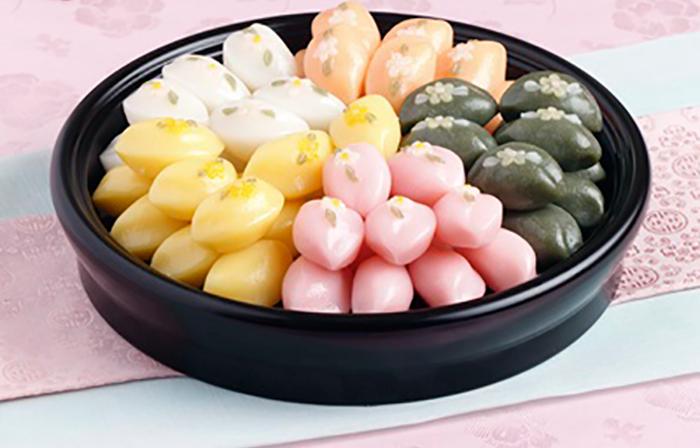
Songpyeon (half moon-shaped rice cake) is the representative food of Chuseok.
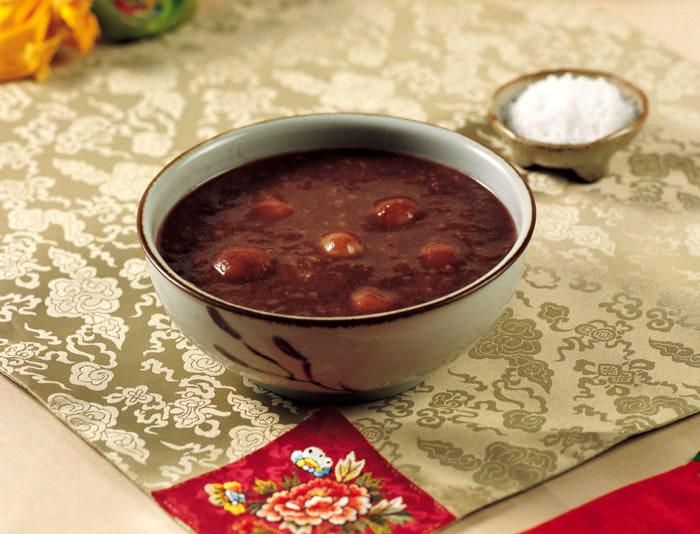
Patjuk is porridge made with boiled red beans with dumpling-shaped balls added. Usually eaten on Dongji (winter solstice), the dish was believed to expel evil ghosts and protect one's yang (positive) energy.
arete@korea.kr